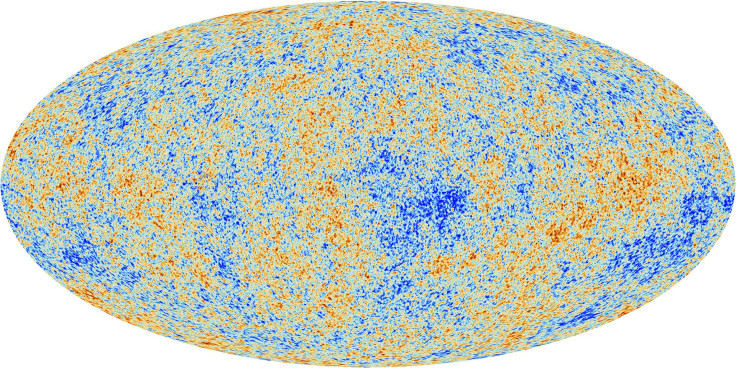‘Delensing’ Cosmic Microwave Background: Researchers Detail New Method To Remove Effects Of Gravitational Lensing

The Cosmic Microwave Background — the radiation created shortly after the Big Bang — is one of the few windows to the early universe we have access to. Analysis of the omnipresent CMB has not only given us incontrovertible evidence for the Big Bang and the universe’s expansion, it has also provided us vital insights into the composition of the observable universe as a whole.
However, even the most detailed map of the CMB ever created is distorted. This distortion is not due to interstellar dust or stellar debris, but is caused by something far more fundamental — the warping of the fabric of space-time.
As Albert Einstein explained in his general theory of relativity, gravity warps space-time. The more massive an object, the greater the distortion it causes. This warping of the fabric of the universe by stars, galaxies, black holes, neutron stars and whatnot results in a phenomenon known as “gravitational lensing,” wherein the strong gravitational field of a foreground object acts as a lens that “bends” light emitted by a distant source.
While this gravitational lens is a great tool for astronomers studying far-flung objects that may otherwise have remained forever hidden, for those seeking to parse the CMB, it is a major inconvenience.
One of main areas of interest for researchers analyzing the CMB today is the hunt for something known as primordial gravitational waves. Our current model of the universe’s formation tells us that it underwent a brief period of exponential expansion trillionths of trillionths of a second after the Big Bang — a phenomenon called “cosmic inflation.” If this happened, it would have generated a powerful hum of gravitational waves — ripples in the fabric of space-time. Scientists believe these primordial gravitational waves are embedded in the cosmic microwave background, where they create distinctive “curly” variations, known as “B-modes” — in the direction of the CMB’s polarization axes.
Detecting this polarization would provide us invaluable insights into what the infant universe was like, and how and when it went through its inflationary phase. The problem is, observations are complicated by galaxies and other massive objects that distort our view of the CMB through gravitational lensing, masking the B-mode polarization caused by primordial gravitational waves.
Now, in a new study published Wednesday in Physical Review Letters, a team of researchers have proposed a “delensing” method that they say can help create undistorted maps of the CMB.
In order to do this, the researchers used a method based on the cosmic infrared background (CIB) — diffuse light emitted primarily from dusty star-forming galaxies. Since bright regions in the CIB correspond to regions of high concentration of galaxies, and thereby to regions that exert greater lensing effects, they were able to map how CMB lensing varies across the sky. This information was then used to subtract the lensing effect from the CMB polarization.
Using this technique, the researchers were able to remove roughly 20 percent of the lensing effect from CMB temperature maps created through data acquired by the European Space Agency’s Planck Space Telescope.
“There are potentially better ways of doing this and we will be looking into that,” lead author Patricia Larsen from the University of Cambridge told Physics World. “But the point is that nobody was confident that you could remove the dust well enough to do this in the first place.”
© Copyright IBTimes 2025. All rights reserved.






















